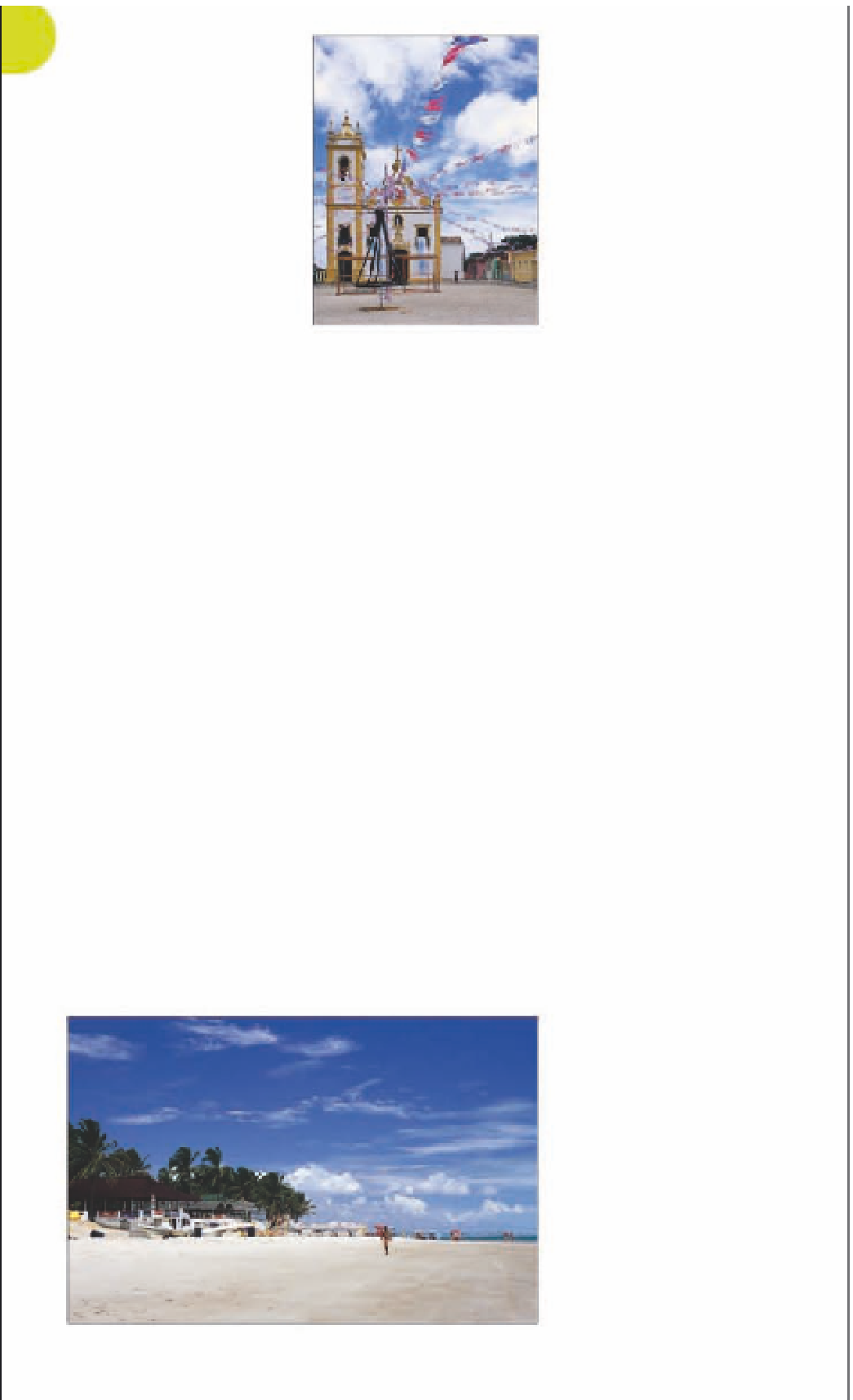Travel Reference
In-Depth Information
Canion Xingó
5
Sergipe.
@
from Aracaju.
n
Reservatório de Xingó
, (
079)
9972 1320.
8
trips to the dam at
8am, 11:30am & 3pm.
&
end is protected by a large
reef. The authorities are
working toward removing
the restaurants that have
been built right on the sand.
R
Convento do São Francisco
Praça Pedro Paulinho.
Tel
(082)
3551 2279.
#
8-11:30am & 2-
5pm Mon-Fri, 8-11am Sat & Sun.
R
Igreja de Santa
Maria Madalena
Praça João 23.
Tel
(082) 3263 1623.
#
9am-5pm Mon-Sun.
Standing on the Rio São
Francisco, the Xingó Dam in
Sergipe is one of the largest
in Brazil. When it was
completed in 1994, the dam
blocked off the São Francisco
canyon at a point about 155
miles (250 km) from the
ocean, causing the river to
rise and create the Xingó
Reservoir. This artificial lake
is now a popular destination.
Catamarans and schooners
depart from the dam and
travel upstream, crossing the
reservoir and re-entering the
main part of the river. Several
rock passageways that pre-
viously lay at the top of the
canyon are now open to
exploration by boat.
Situated 2 miles (3 km)
from the dam, the
Museu
de Arqueológia de Xingó
displays numerous archaeo-
logical objects from nearby
sites that were flooded when
the dam was created. Artifacts
from the earliest sites, dating
from around 5000 BC, include
arrows, rock paintings, primi-
tive stone mortars, and fish
cleaning tools. Later sites
reveal a variety of items
including bone jewelry,
decorative ceramics, and clay
containers and dishes.
E
Museu de Arqueológia
de Xingó
2 miles (3 km) from Xingó dam
at Rodoviaria Canindé-Piranhas.
#
9am-4pm Wed-Sun.
&
8
7
Igreja de Santa Maria Madalena in
Marechal Deodoro's historic center
Maceió
7
Alagoas.
*
885,000.
~ @
(082)
221 4615.
n
Rua Boa Vista 453,
Centro, (082) 3315 5700.
_
Maceió
Fest (Nov).
Marechal
Deodoro
6
Alagoas.
*
30,000.
@
from
Maceió.
n
(082) 8856 9091.
The capital of Alagoas,
Maceió is known for its many
beautiful urban beaches. The
best known ones, from north
to south, are
Jatiúca
,
Ponta
Verde
,
Sete Coqueiros
, and
Pajuçara
. Protected by reefs,
the beaches have little or
no surf, warm water, and a
Caribbean turquoise-green
color. The shores are lined
with thick groves of coconut
palms, especially dense
at Ponta Verde.
About 1 mile (2 km)
offshore from Pajuçara, a
series of large coral reefs are
partially exposed at low tide,
forming sizable natural pools
that can be explored with a
mask and snorkel. Small
single-sail rafts known as
jangadas
depart daily at low
tide from Ponta Verde and
take about 20 minutes to
reach the pools.
In addition to the beaches,
Maceió has a small historic
core. The neighborhoods
of Jaraguá and Centro, just
inland from the port, have
a large number of well-
preserved historic buildings
which convey some of the
atmosphere of the city's 19th-
century sugar boom. One of
the loveliest mansions on the
waterfront has been beauti-
fully restored and now houses
the
Museu Théo Brandão
.
Named after a local writer
who wrote about Alagoan
folk art and anthropology, the
small museum has a good
collection of native art. It also
The capital of Alagoas until
1839, Marechal Deodoro
was founded in 1611 as Vila
Madalena. The city was
renamed in honor of its
native son, Marshall Manuel
Deodoro da Fonseca (1827-
92), elected as Brazil's first
president in 1891. Fonseca's
childhood home is now a
small museum, displaying
much of the original furniture
and family memorabilia.
The city's small 18th-century
colonial center features the
Rococo
Igreja de Santa
Maria Madalena
. Adjoining
the church, the
Convento
do São Francisco
houses a
small museum.
Just a 15-minute bus ride
from the city is the
Praia do
Francês
, with powdery sand
and deep blue water. It has
enormous waves for surfing
at one end, while the other
View of Praia de Francês, one of the popular beaches of Marechal Deodoro
For hotels and restaurants in this region see pp378-9 and pp403-405







































